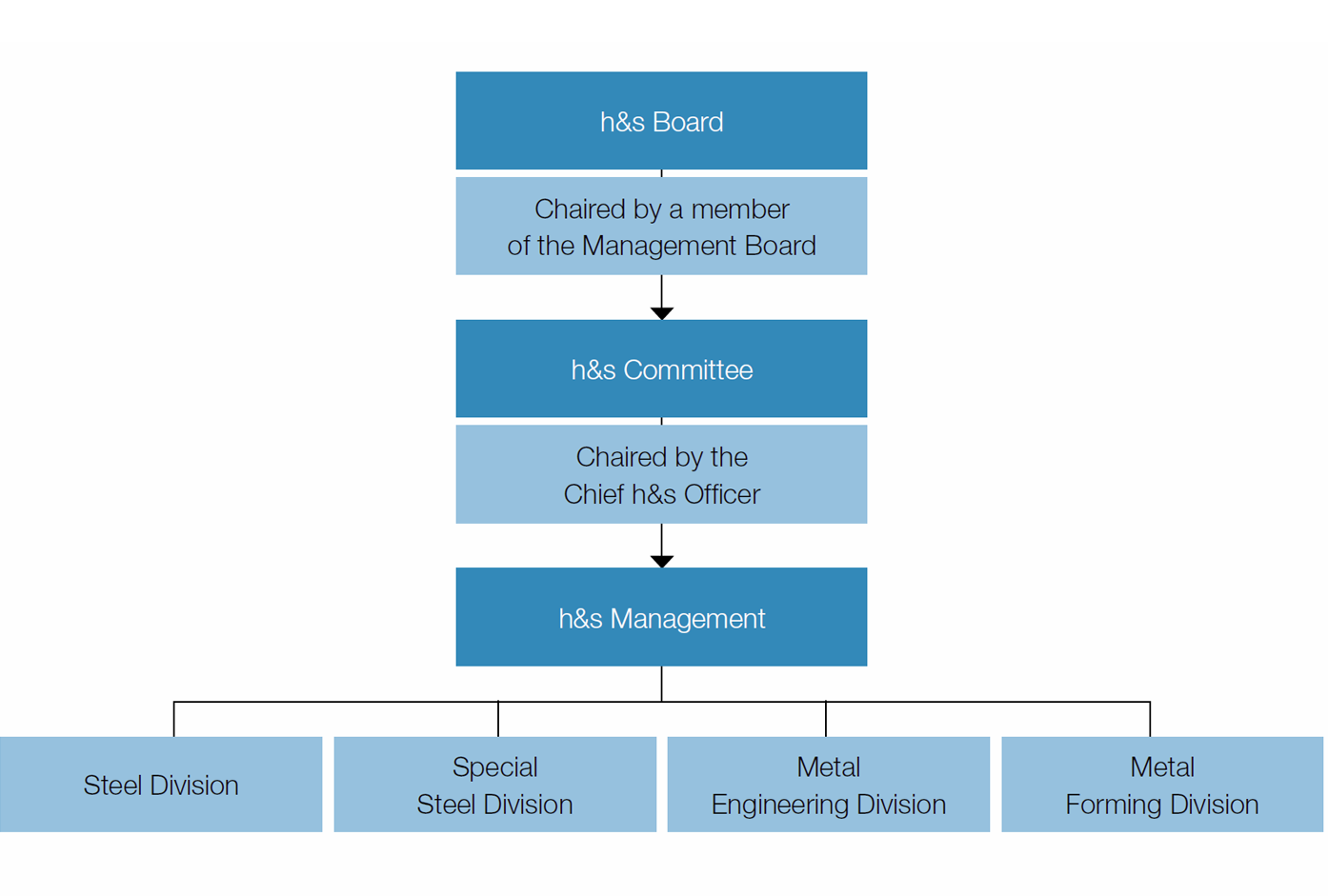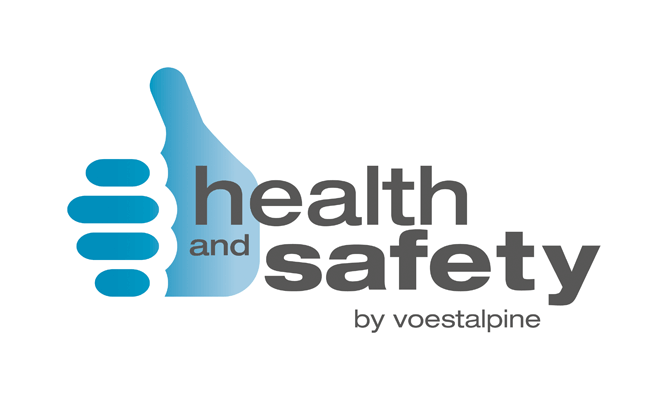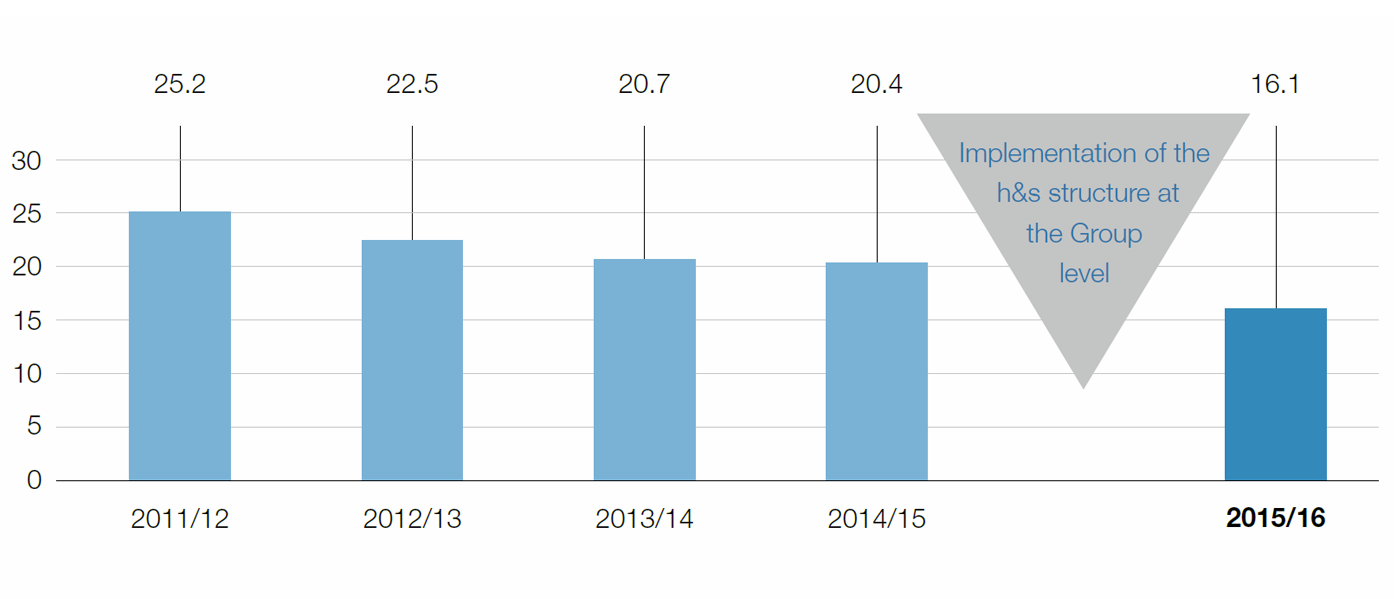
Automobile component
The main responsibilities of the persons and entities in charge of h&s, from the Chief health and safety Officer to the h&s Committee headed by the Chief h&s Officer to the persons responsible in the individual divisions (see graphic) are to establish and promote an active and vibrant h&s culture. Two focal points are achieving uniform key performance indicators and learning best practices throughout the Group. In order to accomplish this, knowledge and experiences will be shared on the h&s platform. The “Learning from the Best” feature will introduce good examples and encourage people to imitate them. Numerous activities will be implemented under the slogan “Professionals work safely” in order to promote a consciousness for safety at work among employees in all sectors and countries. Management has an important role in this process, as executives can make an essential contribution to the program’s success and achieve a reduction of work-related accidents by providing a good example and consistently implementing all guidelines.
An overview of the structure at the Group level:

OHSAS 18001
Numerous voestalpine Group companies already have certifications in accordance with an occupational safety and health management system. All of the companies of the Steel Division have already been certified in accordance with OHSAS 18001, for example. As OHSAS 18001 certifications are being rolled out throughout the entire Group, the next goal is for all companies of the Metal Engineering Division to be certified in accordance with this occupational safety and health management system by the end of 2017.

h&s performance
The two most important key performance indicators, which are already being tracked Group-wide through the health & safety organizational structure, are the Lost Time Injury Frequency Rate (LTIFR) and the “health quota.”
LTIFR
This key performance indicator captures the number of work-related accidents per million working hours, which are subject to reporting requirements and result in more than three lost days or death.
As the regulations for work-related accidents, which must be reported and which result in lost days and lost working hours, differ widely in the individual countries, a uniform definition has been established at the Group level. The figures captured beginning in the business year 2015/16 are governed by this definition and therefore deviate from previous figures. The graphic shows that the number of work-related accidents has gone down continuously in the past years. Nevertheless, every work-related accident is one accident too many so that the mission statement is clear: zero work-related accidents.
To our deep regret, there was a fatal work- related accident at voestalpine in the business year 2015/16.
Developement of the Lost Time Injury Frequency Rate (LTIFR)

Health quota
The health quota indicates the percentage of the target working hours during which the employees were actually present during a pre-defined period. By pursuing an active health promotion policy, voestalpine is aiming to promote and maintain the physical and psychological health of its employees. A high health quota is not only in the interest of the individual employee but creates the basis for a successful business operation. While the company makes an important contribution to the health of its employees through proper workplace/workstation design, it is also necessary to encourage employees to maintain a healthy lifestyle. To this end, individual companies and locations are implementing various measures. The objective is to lower the number of sick days overall, but at the same time to ensure that sick employees have the necessary convalescence period. The vision of h&s Management is to lower the number of work-related illnesses to zero.
The health quota was determined in the business year 2015/16 for the first time and was 96% for the entire voestalpine Group.
Occupational safety for contractors and third-party companies
voestalpine also endeavors to ensure that life and health of employees of third-party companies are protected. Binding guidelines have been issued in this regard, which must be complied with by employees of contractors and third-party companies.
Share page